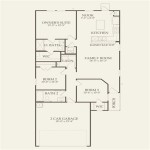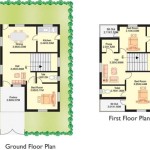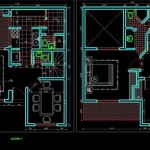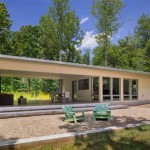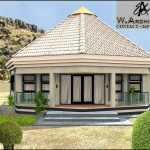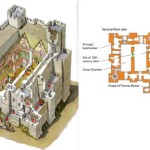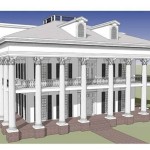2300 Sq Ft House Plans With Pool: Design and Considerations
Designing a 2300 sq ft house plan with a pool requires careful consideration of space allocation, lifestyle integration, and adherence to local building codes. The ideal layout balances indoor living areas with outdoor recreational spaces, creating a cohesive and functional home environment. This article elucidates key aspects of designing such plans, focusing on spatial organization, pool integration, and design variations.
A 2300 sq ft house provides ample space for a family home, allowing for multiple bedrooms, living areas, and designated spaces for various activities. However, incorporating a pool into the design necessitates a strategic approach to maximize both indoor and outdoor usability. The pool's size, location, and surrounding landscaping significantly impact the overall aesthetics and functionality of the property.
Spatial Organization and Room Layout
The first crucial step in designing a 2300 sq ft house plan with a pool is determining the optimal spatial organization. This involves allocating square footage to different areas based on priority and lifestyle. Key areas to consider include bedrooms, bathrooms, living areas (living room, dining room, kitchen), and outdoor spaces (pool area, patio, garden). A well-defined spatial hierarchy ensures smooth transitions between different zones and enhances the overall flow of the house.
Typically, a 2300 sq ft house can accommodate three to four bedrooms, depending on the size of each room and the inclusion of features like walk-in closets and en-suite bathrooms. The master bedroom usually occupies a larger area and is often situated away from the other bedrooms for added privacy. The remaining bedrooms can serve as children's rooms, guest rooms, or home offices depending on the occupants' needs.
The living areas, encompassing the living room, dining area, and kitchen, are generally designed as open-concept spaces to promote social interaction and create a sense of spaciousness. The kitchen, in particular, should be strategically located to facilitate easy access to both the dining area and the outdoor pool area. This allows for seamless indoor-outdoor dining and entertaining. The inclusion of a kitchen island can provide additional counter space and seating, further enhancing the functionality of the kitchen.
Bathrooms should be strategically placed to serve different areas of the house. A master bathroom is typically connected to the master bedroom, while a common bathroom serves the remaining bedrooms and living areas. A powder room near the entrance or living area can be a convenient addition for guests. The number of bathrooms and their layouts depend on the size of the family and their specific requirements.
Effective use of hallways and corridors is essential to minimize wasted space and ensure efficient traffic flow within the house. Wide hallways can create a sense of openness, while strategically placed doorways can help to define different zones and maintain privacy where needed. Storage spaces, such as closets and pantries, should be integrated into the design to maximize organization and minimize clutter.
Pool Integration and Outdoor Living
Integrating the pool seamlessly into the overall design of the house is paramount to creating a cohesive and functional outdoor living space. The pool's location, size, and shape should complement the architecture of the house and the surrounding landscape. Consider factors such as sunlight exposure, privacy, and accessibility when determining the pool's placement.
The pool can be positioned in the backyard, side yard, or even integrated into an interior courtyard, depending on the property's layout and the desired level of privacy. A backyard pool is the most common option, providing ample space for swimming and lounging. A side yard pool can be a good choice for properties with limited backyard space or for those seeking a more secluded setting. An interior courtyard pool can create a unique and luxurious ambiance, but requires careful planning to ensure adequate ventilation and drainage.
The size of the pool should be proportional to the size of the house and the available outdoor space. A larger pool may be suitable for families who enjoy swimming and hosting pool parties, while a smaller pool or plunge pool may be sufficient for relaxation and cooling off. The shape of the pool can also influence its functionality and aesthetics. Rectangular pools are ideal for swimming laps, while freeform pools can create a more natural and organic feel.
Surrounding the pool with a well-designed patio or deck is essential to create a comfortable and functional outdoor living space. The patio or deck provides space for lounging, dining, and entertaining, and can be constructed from various materials such as concrete, wood, or stone. Consider incorporating features such as outdoor furniture, umbrellas, and a barbecue grill to enhance the usability of the outdoor area.
Landscaping plays a crucial role in creating a visually appealing and inviting pool area. Plants and trees can provide shade, privacy, and a sense of tranquility. Choose plants that are well-suited to the local climate and that require minimal maintenance. Consider incorporating features such as water features, outdoor lighting, and a fire pit to further enhance the ambiance of the outdoor space. Fencing or hedging around the pool area can also be incorporated to enhance privacy and security.
Design Variations and Considerations
Numerous design variations can be implemented when creating a 2300 sq ft house plan with a pool, catering to different lifestyle preferences and architectural styles. The choice of design elements and materials can significantly impact the overall look and feel of the house, as well as its functionality and energy efficiency. Some key considerations include the architectural style, the floor plan layout, and the use of sustainable design principles.
Architectural styles can range from contemporary and modern to traditional and rustic, each offering a unique aesthetic appeal. Contemporary designs often feature clean lines, large windows, and open-concept layouts, while traditional designs may incorporate more ornate details and a more formal spatial organization. The choice of architectural style should complement the surrounding environment and reflect the homeowner's personal preferences.
Floor plan layouts can be adapted to suit different family sizes and lifestyle needs. A single-story layout may be preferred for its ease of access and accessibility, while a two-story layout can maximize space utilization and provide more privacy. The layout of individual rooms and the flow between different zones should be carefully considered to ensure optimal functionality and comfort.
Sustainable design principles can be incorporated into the house plan to minimize its environmental impact and reduce energy consumption. This can include using energy-efficient appliances and lighting, incorporating solar panels, and utilizing sustainable building materials. Proper insulation and ventilation can also help to reduce heating and cooling costs. Water conservation measures, such as low-flow toilets and showerheads, can further minimize the house's environmental footprint.
Building codes and regulations must be carefully considered during the design process to ensure compliance and safety. This includes adhering to local zoning laws, building codes, and pool safety regulations. It is advisable to consult with a qualified architect or builder to ensure that the house plan meets all applicable requirements and is feasible for construction. Permits and inspections may be required at various stages of the construction process.
The selection of materials for the house and pool area can significantly impact its durability, aesthetics, and maintenance requirements. Consider using durable and weather-resistant materials for the exterior of the house and the pool deck. Choose materials that are easy to clean and maintain, and that complement the overall design aesthetic. The choice of pool finish can also affect its appearance and longevity. Options include plaster, tile, and pebble finishes.
Finally, budget considerations should be taken into account throughout the design process. The cost of building a 2300 sq ft house with a pool can vary depending on the location, materials, and design complexity. It is important to establish a realistic budget and to prioritize features and materials accordingly. Obtain quotes from multiple contractors and suppliers to ensure that you are getting the best possible value for your money. Contingency funds should be set aside to cover unexpected costs or delays.

2300 Sq Ft Open Floor Plans With Billiard Room Google Search House How To Plan

4 Bedroom Ranch House Plan With 2300 Square Feet

House Plan 54047 Ranch Style With 2300 Sq Ft 4 Bed 3 Bath

Ranch Style House Plan 4 Beds 3 Baths 2300 Sq Ft 1010 87 Dreamhomesource Com Floor Plans

House Plan 87957 Traditional Style With 2300 Sq Ft 3 Bed 2 Ba

Ranch House 4 5 Bedrms 2 Baths 2300 Sq Ft Plan 206 1030

Ranch Style House Plan 4 Beds 3 Baths 2300 Sq Ft 60 273 Homeplans Com

Ranch House 4 5 Bedrms 2 Baths 2300 Sq Ft Plan 206 1030

2300 Sq Ft Modern Farmhouse With Home Office Option And Bonus Expansion 444352gdn Architectural Designs House Plans

2300 Sq Ft First Floor Plan Residential Building Bungalow Plans Hotel

